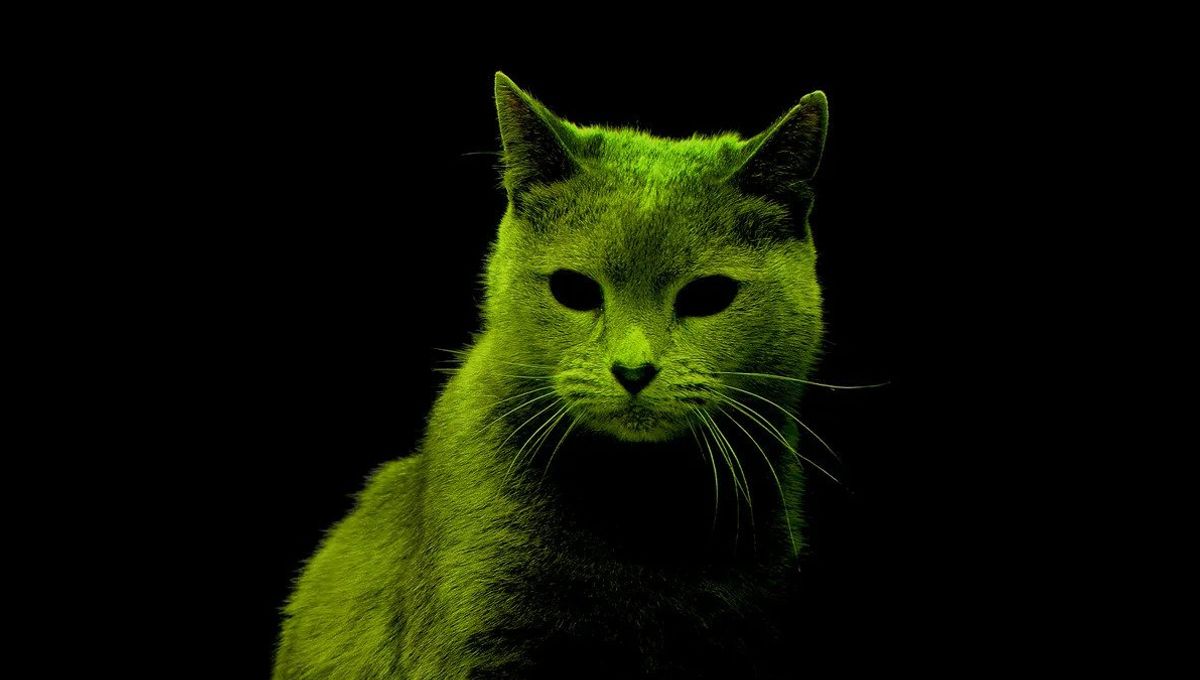
Nuclear waste is a serious problem. Not only is it difficult to safely dispose of, but its harmful effects can remain a threat thousands of years into the future. In that time, whole civilizations and languages may have come and gone, posing a real challenge for safeguarding future generations from a hazard we produce today. So what can we do about it? You may be surprised to learn that some believe it could involve color-changing cats.
The challenges of nuclear and radioactive waste
Nuclear power and nuclear weapons are divisive topics today, but regardless of whether you are for or against these technologies, their waste products are already with us.
In the years between 1954 – when we first started producing electricity from nuclear energy – and 2016, some 390,000 tonnes of spent fuel were generated. Spent fuel is known as high-level waste, as it contains the most radioactive byproducts produced by nuclear fission reactions in nuclear reactors. Although spent fuel is no longer useful for creating energy, the materials remain hot, radioactive, and dangerous. High-level waste is also produced during the manufacturing of nuclear weapons as well as leftovers from fuel reprocessing and recycling operations.
Generally speaking, the amount of waste created by the worldwide nuclear power industry is comparatively lower than that produced by thermal electricity generation technologies. However, the challenge comes with its final disposal.
At the moment, high-level waste and other radioactive materials are being stored on-site by many countries with nuclear reactors, but this is only an interim option. Around a dozen countries, including Finland, Switzerland, and other nations in Europe, are looking at deep geological repositories for their nuclear waste. These repositories would effectively entomb the spent fuel and keep it underground for 100,000 years.
And while this may seem like an adequate solution now, some have worried about the effects this hidden waste could have on distant generations who have no knowledge of what we have done. Humans have been around for about 300,000 years and in that time our civilizations have risen and fallen, and languages have come and gone or mutated beyond recognition. So it makes sense that, although we may not be here in thousands of years, the radioactive waste we produce will be and it could leak into groundwater and spread beyond its subterranean tomb.
Enter, ray cats
In the 1980s, the US Department of Energy convened a panel of linguists and scientists – called the Human Interference Task Force – to investigate existing or potential solutions to help reduce the likelihood that future humans will accidentally intrude on areas where nuclear waste has been stored.
According to the team, because many of us would struggle to read written texts that are 1,000 years old, the hope that a written warning would be understood by our descendants seems unreliable. Other options are needed that rely on symbols or architecture, which could transcend generations and language changes, so as to mark hazardous locations.
At the same time, the writer Françoise Bastide and Paolo Fabbri, an expert in semiotics (the study of signs and symbols and their use or interpretation) proposed a different plan. Since cats have lived with humans for thousands of years, they argued, surely, they could be used to communicate a warning in a similar way to canaries in a coal mine. In this instance, they proposed that cats or other animals could be bred to “react with discoloration of the skin when exposed” to atomic radiation.
“Such an animal species should dwell within the ecological niche of humans, and its role as a detector of radiation should be anchored in cultural tradition by introducing a suitable name (e.g., “ray cat”) and suitable proverbs and myths.”
In short, we create stories and myths surrounding these specially bred kitties and tell our children about them, then they tell theirs, and so on down the generations. Then, thousands of years from now, if someone sees their cat change color then they know that they need to get away.
As unusual as this idea sounds, it became quite popular in 2015 when the Ray Cat Solution movement came into existence. Taking their inspiration from Bastide and Fabbri’s work, the movement wanted to turn the ray cats idea into a cultural phenomenon and invited scientists, artists, and anyone else to “create the culture/legend/history that if your cat changes colour, you should move some place else.” They even produced a beautifully designed video to explain their aims.
It is unclear whether glowing kitties really could be the solution for the future, and we doubt they will be, but the more we discuss the issues surrounding the long-term storage of nuclear materials, the more likely we are to develop an idea that works. This is very much needed, as we cannot kick the toxic can down the corridor and expect the people of tomorrow to worry about it.
Source Link: Ray Cats: Can Color-Changing Kitties Protect Future Generations From Radioactive Waste?